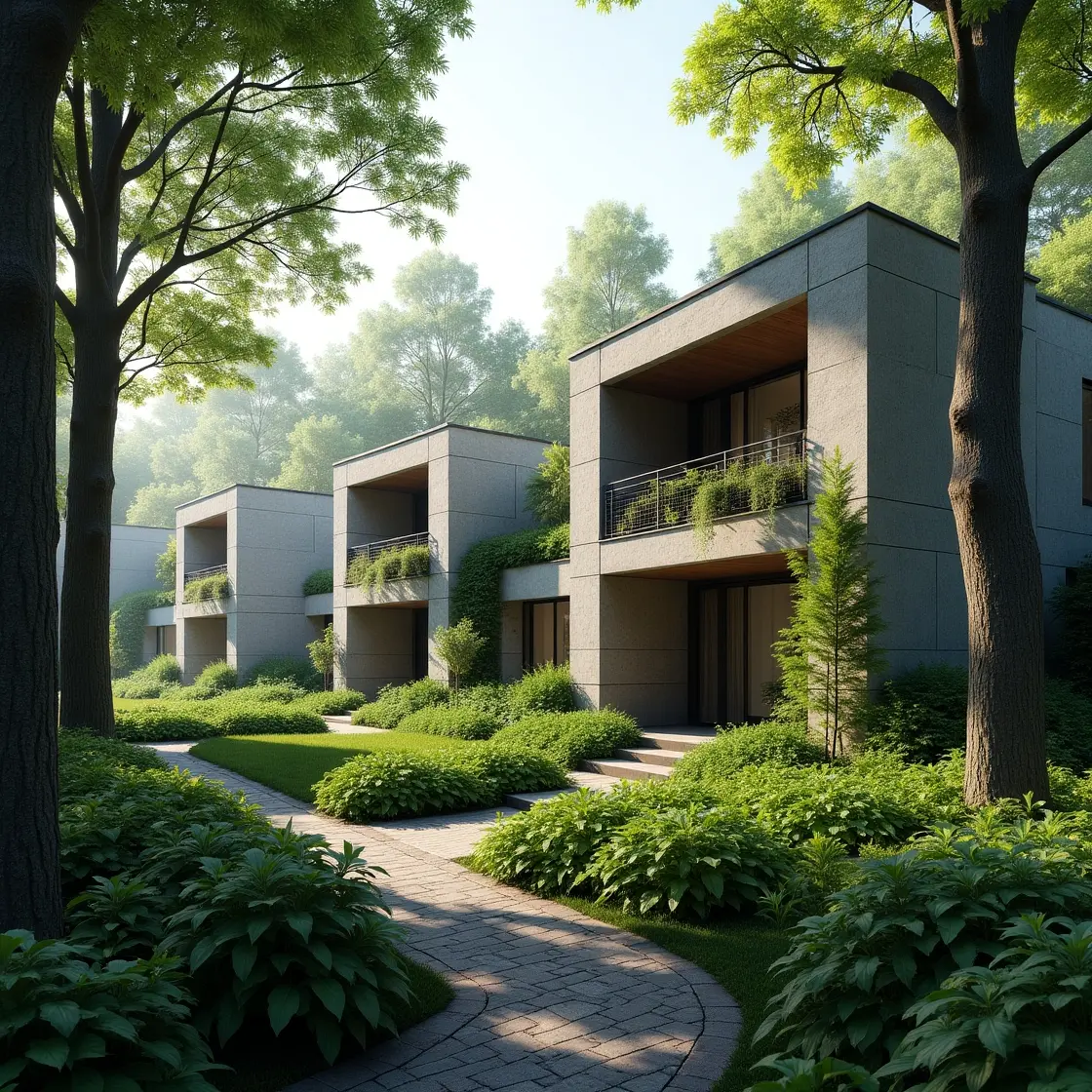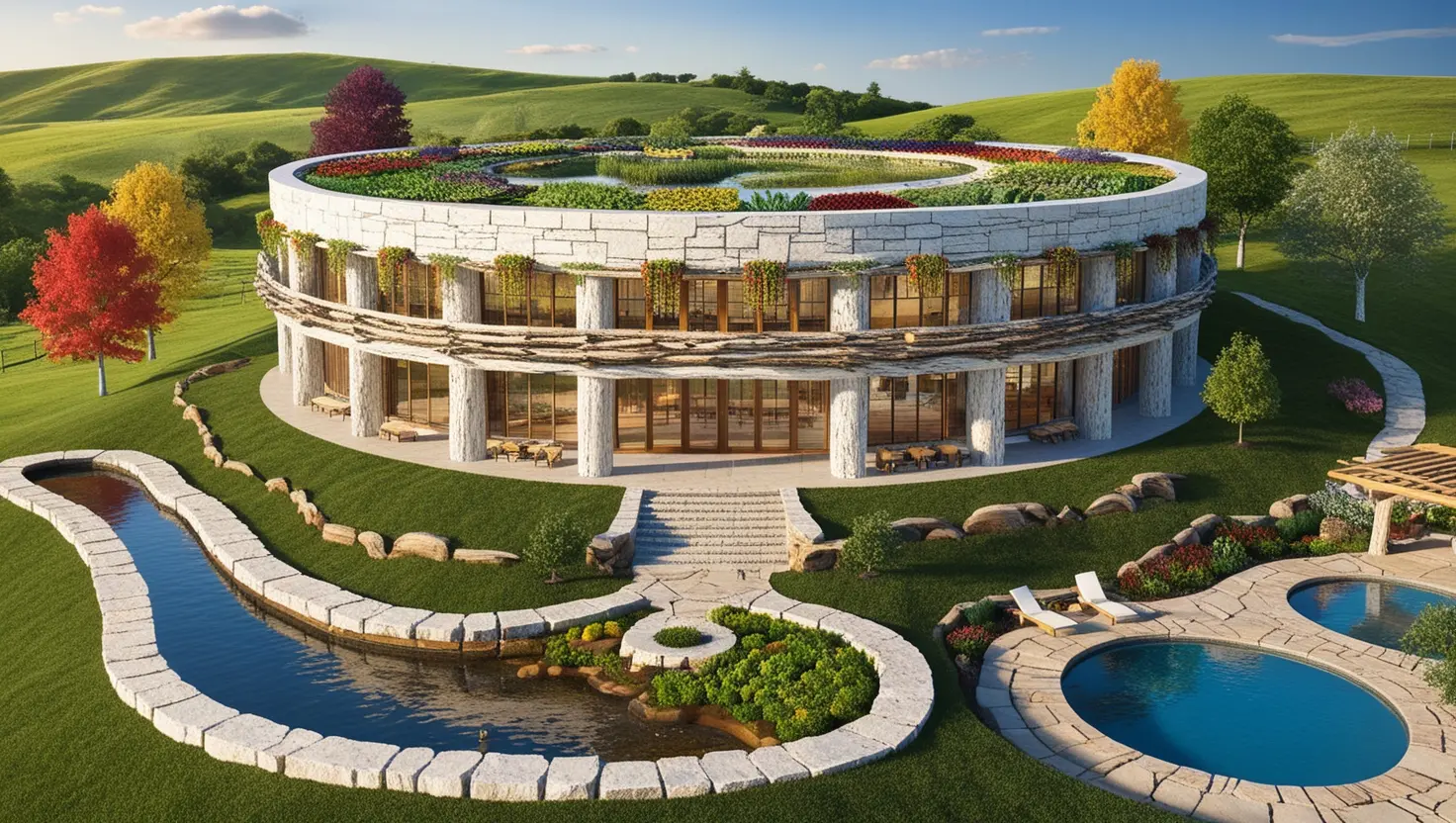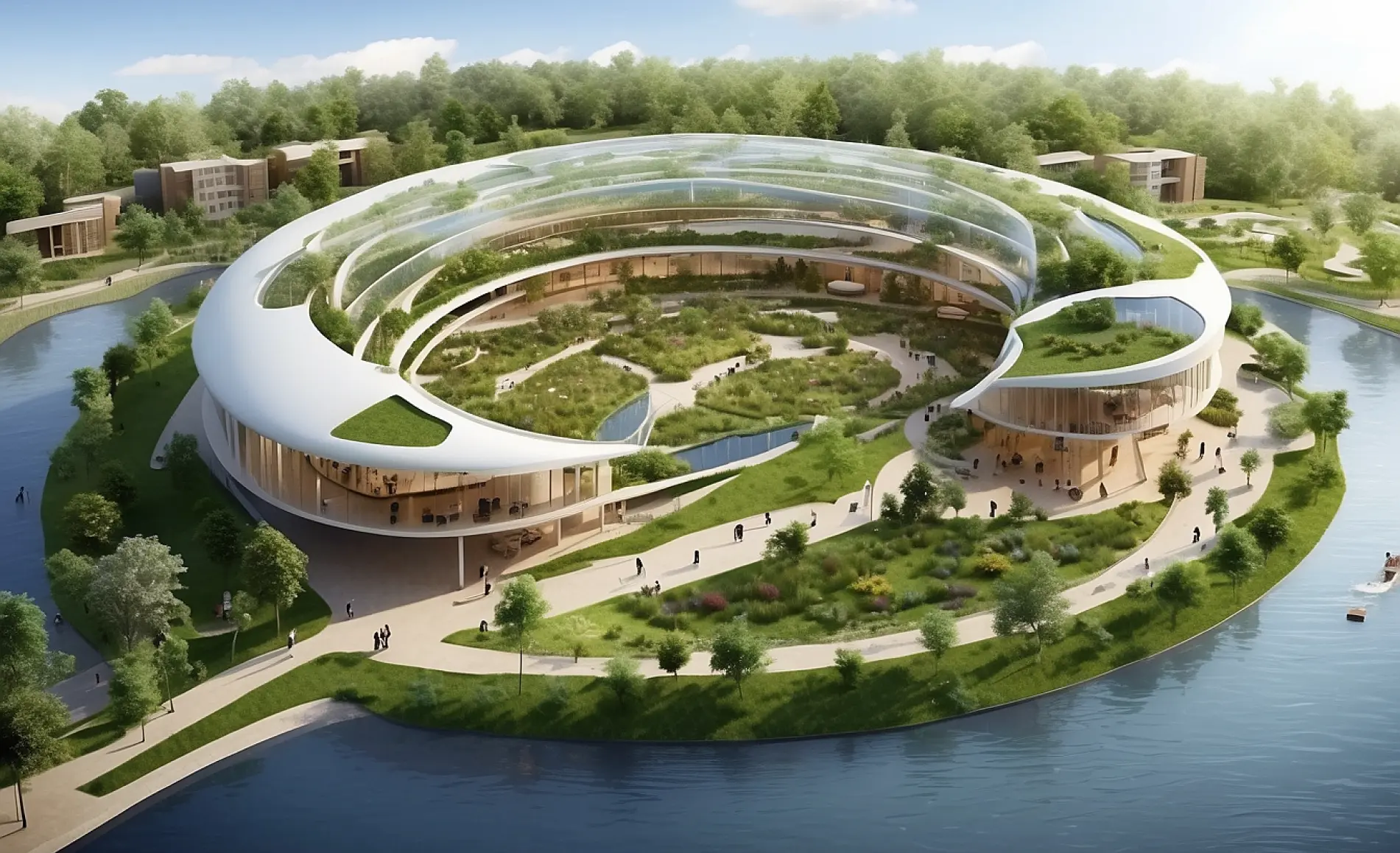The Next Generation of Earth Materials
For centuries, humanity has relied on wood as the primary building material, cutting down forests to construct homes, cities, and infrastructures. While trees are the original harmonizers of our ecosystems—providing oxygen, cooling, and balance to the planet—using them as lumber disrupts the very cycles that keep our Earth alive. Today, we stand at the greatest time of innovation in construction history, where new earth-based materials like basalt and geopolymer concretes offer durability, sustainability, and wellness without destroying forests.
By choosing these advanced materials, we not only reduce deforestation but also eliminate toxic off-gassing from plastics, paints, and glues common in conventional building. In doing so, we begin to heal our home environments while living in harmony with Nature—proving that, indeed, “humanity can and does thrive with Nature, where we all flourish together.”
Basalt: Lava Rock Transformed into Structure
Basalt is a volcanic rock that can be melted and spun into fibers or shaped into durable rebar, panels, and structural composites.
- Strength & Durability: Basalt rebar is stronger than steel, corrosion-proof, and lasts for centuries.
- Eco-Friendly: Sourced from abundant natural lava rock with minimal processing impact.
- Non-Toxic: Unlike treated lumber or chemical composites, basalt emits no off-gassing.
- Fire & Pest Resistance: Naturally fireproof and immune to insects and mold.
Applications include reinforcement in concrete, roofing tiles, cladding, and insulation—making basalt a powerful tool for regenerative building.
Basalt fiber-reinforced composites have been used in bridges in Italy and high-rise buildings in Dubai, chosen for durability in harsh climates and resistance to structural degradation.
Impact on Environment and People:
Basalt’s scalability and availability make it a reliable cornerstone for affordable, long-lasting, disaster-resistant housing, a clear clean choice of a better building material over wood.
Basalt solutions reduce demand for wood, steel, and toxic composites, securing forests and minimizing harmful industrial emissions.
Highly recyclable, supporting a circular economy and minimizing waste.
Geopolymer Concrete: The Future of Stone-Like Materials
Unlike Portland cement (responsible for nearly 8% of global CO₂ emissions), geopolymers use aluminosilicate materials activated with alkaline solutions to form rock-like, carbon-light building materials.
Types of Geopolymers
- Alkali-Aluminosilicate (AAS)
- Made with fly ash, slag, or natural pozzolans.
- Provides high compressive strength, low shrinkage.
- Ideal for general construction and infrastructure.
- Aluminosilicate Phosphate (ASP)
- Uses phosphate-based activators.
- Exhibits high resistance to acids and extreme environments.
- Suited for industrial, marine, and wastewater applications.
- Ferro-Sialate
- Incorporates iron oxides and aluminosilicate.
- Highly durable and eco-friendly, sometimes utilizing industrial waste.
- Excellent for structural strength and long-term resilience.
Together, these geopolymer types represent a carbon-conscious alternative to cement, with performance advantages in durability, chemical resistance, and sustainability.
Comparison Chart: Basalt & Geopolymers vs. Wood
| Feature | Basalt | AAS Geopolymer | ASP Geopolymer | Ferro-Sialate Geopolymer | Wood |
| Raw Source | Lava rock | Fly ash, slag, pozzolans | Aluminosilicate + phosphate | Iron oxides + aluminosilicate | Trees (forests) |
| Carbon Impact | Low (abundant, minimal emissions) | Low (utilizes waste materials) | Low-medium | Very low (waste-based) | High (deforestation, CO₂ loss) |
| Strength | Very high (better than steel) | High compressive strength | High, esp. chemical resistance | High, long-term resilience | Moderate, degrades over time |
| Durability | Centuries, corrosion-proof | Long-lasting | Excellent in harsh environments | Excellent | Moderate, vulnerable to decay |
| Fire Resistance | Excellent (non-combustible) | Excellent | Excellent | Excellent | Poor (combustible) |
| Mold/Pest Resistance | Complete | High | High | High | Poor |
| Toxic Off-Gassing | None | None | None | None | Often (paints, treatments) |
| Best Uses | Rebar, panels, roofing, insulation | General construction, infrastructure | Marine, industrial, wastewater | Structural, eco-friendly builds | Framing, finishes |
Why These Earth Materials are the Better Choice
- Trees as Allies, Not Timber: Forests should be preserved for their planetary role—oxygen production, climate regulation, biodiversity. Cutting them for homes undermines our collective health.
- Healthier Homes: Basalt and geopolymers are free from the toxic off-gassing of synthetic glues, resins, and plastics.
- Circular Economy: Many geopolymer mixes use industrial byproducts like fly ash, turning waste into durable housing.
- Resilience: Fire, mold, earthquake, and weather resistance make these materials far superior to wood.
- Longevity: Homes built with basalt and geopolymers stand for centuries, creating legacy dwellings that outlast generations.
Living in the Greatest Age of Innovation
We are standing at a transformational moment. Just as humanity once shifted from stone to bronze, then to steel and concrete, we now pivot toward basalt and geopolymers—the regenerative materials of the future. They empower us to build homes that last longer, perform better, and heal rather than harm.
By adopting these innovations:
- We protect forests, leaving trees to play their ecological role.
- We eliminate toxic building chemicals from our daily lives.
- We create homes and communities that are disaster-resilient and planet-positive.
Thriving in Harmony with Nature – is a simple choice.
The decision is not about what we sacrifice, it is about what we gain. By replacing wood and toxic building materials with basalt and geopolymers, we gain stronger, healthier, longer-lasting homes. We gain thriving forests that stabilize our climate. And we gain a future where humanity truly thrives in harmony with Nature. Yes, that is my mantra.
🌱 Follow me on LinkedIn for more RegeniThrive Reports, or connect directly through the Consulting tab on my website to learn how to integrate these advanced regenerative materials into your projects and communities.
This article is part of my RegeniThrive Report series on regenerative building materials and the urgent need to save our trees and forests. There is so much more to discover beyond what you’ve just read, each report highlights innovative solutions that allow us to build homes and communities without harming Nature and focuses on different options in each article. I invite you to explore the full series by visiting my blog at annanaturalista.com/blog, where I post new RegeniThrive reports each week. And if you are a community developer or simply ready to build your home or office with these regenerative materials, reach out to me directly so I can share the best sources and resources in your region of the world. Together, we can co-create spaces that honor life while protecting our precious trees, the pillars of all life on our beloved planet.




















